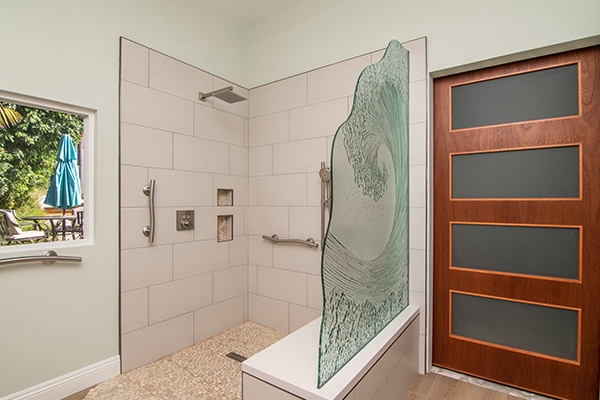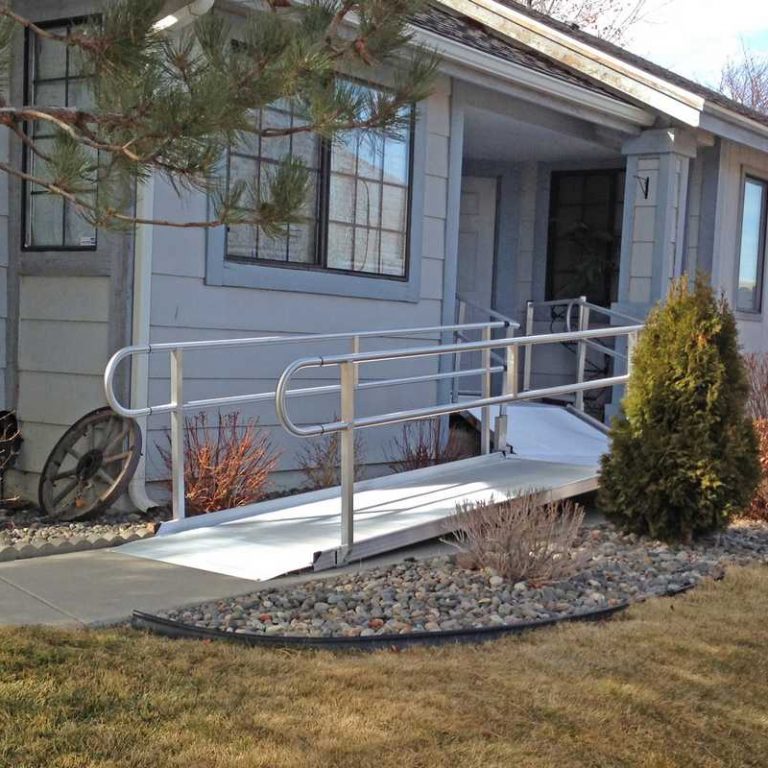As the baby boomer generation ages, they face the challenge of living independently and comfortably in their own homes. Aging-in-place remodeling is a solution that can provide the necessary modifications to ensure a safe and comfortable living environment for seniors in their own homes.
What is Aging-in-Place Remodeling?
Aging-in-place remodeling is the process of modifying an existing home to make it more comfortable, accessible, and safe for seniors to live in. It involves adding features such as grab bars, wider doorways, ramps, and stair lifts, as well as improvements to lighting, flooring, and kitchen and bathroom fixtures. The goal of aging-in-place remodeling is to create a home that is suitable for seniors to live in for as long as possible without the need for assisted living facilities or nursing homes.
Why Aging-in-Place Remodeling is Important
Aging-in-place remodeling is becoming increasingly important as the population of seniors continues to grow. The U.S. Census Bureau estimates that 79.2 million Americans will be 65 or older by 2030, including all baby boomers. Many elders desire to stay in their homes, but physical and cognitive issues may make it unsafe and uncomfortable. Aging-in-place refurbishment keeps elders independent and happy.
Benefits of Aging-in-Place Remodeling
There are many benefits to aging-in-place remodeling, including:
- Increased Safety: Modifications such as grab bars and handrails can help prevent falls, while improved lighting can reduce the risk of accidents.
- Improved Accessibility: Wider doorways, ramps, and stair lifts can make it easier for seniors to navigate their homes, even using mobility aids such as walkers or wheelchairs.
- Increased Comfort: Upgrades to flooring, bathroom fixtures, and kitchen appliances can make everyday tasks easier and more comfortable.
- Enhanced Value: Aging-in-place remodeling can increase a home’s value, making it more appealing to a wider range of buyers.
- Reduced Costs: Aging-in-place remodeling can be a cost-effective alternative to moving to a senior living facility or nursing home, which can be expensive.
Common Aging-in-Place Modifications
Many modifications can be made to a home to make it more suitable for aging in place. Some of the most common modifications include:
- Grab Bars: These can be installed in bathrooms, bedrooms, and other areas to provide support and prevent falls.
- Handrails: These can be added to stairs and hallways to provide support and help seniors maintain their balance.
- Wider Doorways: These can be installed to accommodate wheelchairs and other mobility aids.
- Ramps: These can be added to the front or back of a home to make it easier for seniors to enter and exit.
- Stair Lifts: These can be installed to allow seniors to safely navigate stairs without the risk of falling.
- Improved Lighting: This can help prevent accidents and make it easier for seniors to see.
- Non-Slip Flooring: This can help prevent falls and provide better traction for seniors who use mobility aids.
- Roll-In Showers: These can make it easier for seniors with mobility issues to bathe.
- Higher Toilets: These can make it easier for seniors to sit and stand up from the toilet.
- Lever-Style Door Handles: These can be easier to use for seniors with arthritis or other hand mobility issues.
Choosing a Contractor for Aging-in-Place Remodeling
When choosing a contractor for aging-in-place remodeling, looking for someone with experience in this type of work is important. Some contractors specialize in aging-in-place remodeling, and they may be a good option to consider. It’s also important to check references and read reviews from previous clients to ensure that the contractor has a good reputation and has provided high-quality work in the past.
In addition, it’s important to ensure the contractor is licensed and insured. In case of an accident or damage during the renovation, both the homeowner and the contractor will be covered.
Finally, it’s important to work with the contractor to develop a clear plan for the remodeling project. This should include a timeline for the project, a detailed list of modifications to be made, and a budget for the project. It’s also important to communicate any special needs or preferences with the contractor to ensure that the final result meets the homeowner’s needs and expectations.

Designing Aging-in-Place Remodeling
The first step in designing aging-in-place remodeling is to identify the unique needs of the senior. This can involve an assessment of the senior’s physical, cognitive, and emotional needs, as well as their living environment. Based on this assessment, a plan can be developed to modify the home to address these needs.
One important consideration in aging-in-place remodeling is universal design, which involves designing spaces that are accessible and functional for people of all ages and abilities. Universal design principles can include the following:
- Wider doorways.
- Lever-style door handles.
- Non-slip flooring.
- Easy-to-reach switches and outlets.
Another important consideration is the use of technology. Smart home technology can be used to enhance safety and convenience for seniors. For example, sensors can be installed to detect falls, while voice-activated assistants can be used to control lighting and temperature.
Modifications for Aging-in-Place Remodeling
A number of modifications can be made to a home to make it more accessible and safe for seniors. Some common modifications include:
- Grab Bars and Handrails – Grab bars and handrails can be installed in bathrooms, hallways, and staircases to provide support and stability for seniors.
- Wider Doorways – Wider doorways can be installed to accommodate mobility aids such as wheelchairs and walkers.
- Ramps – The installation of ramps can make it much simpler for the elderly to enter and leave the house.
- Stair Lifts – Stair lifts can be installed to provide seniors with easy access to the upper levels of the home.
- Improved Lighting – Improved lighting can help seniors with vision problems navigate their homes safely.
- Non-Slip Flooring – Non-slip flooring can help prevent falls by providing a surface that is less likely to cause slips and trips.
- Roll-In Showers – Roll-in showers can be installed to make it easier for seniors with mobility issues to bathe.
- Higher Toilets – Higher toilets can be installed to make it easier for seniors to use the restroom.
The Importance of Hiring a Professional
Aging-in-place remodeling can be a complex process involving a number of modifications that must be made to the home. That’s why it’s crucial to hire a seasoned contractor that knows what they’re doing.
A professional contractor can provide guidance and expertise in designing and implementing aging-in-place remodeling. They can also ensure that all modifications comply with local building codes and safety standards.
When hiring a professional contractor for aging-in-place remodeling, it is important to do your research. Look for a contractor who specializes in this type of work and has a good reputation in the industry. Check references and reviews from previous clients to ensure the contractor has a track record of providing high-quality work.
Conclusion
To help elders keep their independence and quality of life as they age, aging-in-place renovations are a crucial option. By modifying a home to increase safety, accessibility, and comfort, seniors can continue living in their own homes for as long as possible. Common modifications include grab bars, handrails, wider doorways, ramps, stair lifts, improved lighting, non-slip flooring, roll-in showers, higher toilets, and lever-style door handles. When choosing a contractor for aging-in-place remodeling, it is important to look for someone with experience, check references, ensure that they are licensed and insured, and develop a clear plan for the project. With the right modifications and support, seniors can enjoy a better quality of life and remain in their homes for years to come.
